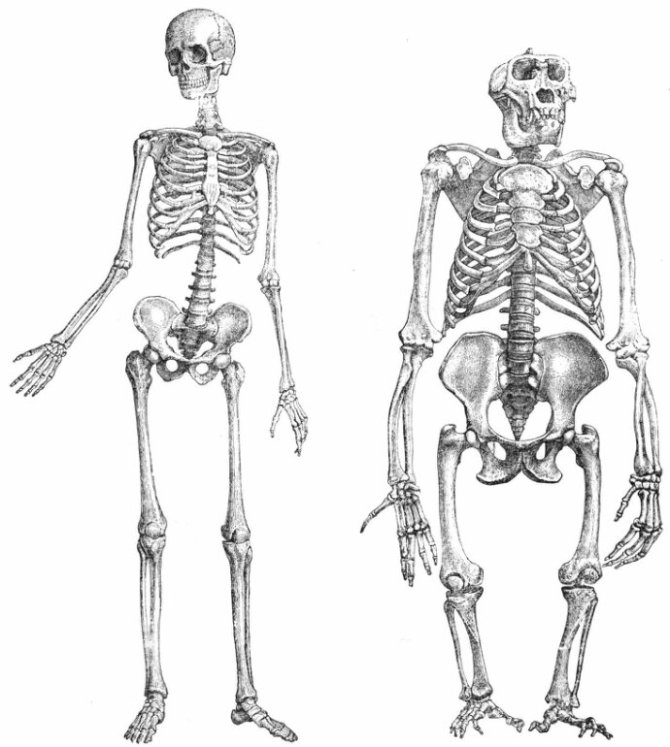As I discussed in part one, bipedalism, the ability to walk upright on two legs, was the first genetic transition that occured in the human-ape split timeline.
Indeed our ancestors’ anatomy underwent all sorts of basic changes to accomodate this new upright way of walking. Many of these changes that occured would have had to help the body stay balanced and comfortable by countering and stabilizing the weight bearing loads and keeping the upper body balanced above the feet. To walk upright in a habitual way, you have to do it in a synchronous manner. If your joints, muscles, and ligaments are not aligned properly it leads to injuries, which would have led the earliest ancestors to become prey, not predator.
The most crucial evolutionary changes in the bone structure were those in the torso, chest and spine. The distance between the chest and the pelvis is larger in humans than in apes, allowing the spine to curve pushing the upper body centered above the pelvis bones for balance. The pelvis grew wider and humans developed a hip joint and other ligaments that stabalize the pelvis, thats why humans do not sway side to side when they walk, apes do.
Even more changes took place in the legs. On the thighbone, the bent part at the top is broader in humans than in apes, which increases balance. The human knee, too, is specialized for upright movement. To compensate for the thighbones being angled, there’s a groove at the end of the femur to prevent the kneecap from sliding off the joint. An ape doesn’t have this groove due to the lack of angulation between the knee and the pelvis. This change meant you were biped.
Lastly, there is the foot. What’s so important here is the height difference in the arch of the foot. The arch is larger and higher on humans than on apes. The arch is a great shock absorber. To create such an arch the ape’s opposable big toe became aligned with the others, and the muscles and ligaments used to grasp trees repositioned under the foot.
Many other changes took place over millions of years and thousands of generations. In the next part I will discuss the evolutionary transits that occured on the exterior.
- Comment
- Reblog
-
Subscribe
Subscribed
Already have a WordPress.com account? Log in now.
